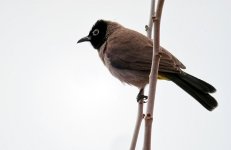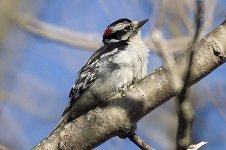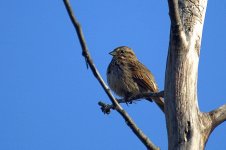Jay Turberville
Well-known member
cfagyal said:As for those asking about digiscoping....The quality of images from a DLSR are so many light years ahead of digiscoping it is really not worth considering moving away from a DSLR. Yes you can get decent images from digiscoping, but you can't get anywhere near what you can get with a DSLR and a high quality lens. The glass used in digiscoping just isn't that good in comparison. The resolution certainly isn't nearly as good. The lack of a flash (and no the popup flash on your Nikon Coolpix 4500 doesn't count) seriously hinders things as well.
Well, how many light years exactly?
It is very true that good and especially excellent optics on a DSLR will be able to deliver more resolution per image frame than just about any digiscoping setup I can think of. But these same good optics don't have the reach of a good digiscoping rig either. If you can get close enough to your bird to get the framing you want, then the DSLR and good lens will deliver a better image. But if you can't get as close and have to crop the image in any substantial way, the advantage begins to disappear quickly.
The 5Mp of my CP5000 is less than the 6Mp of a D70, but the 8Mp of a CP8400 can probably deliver about the same level of detail - given decent optics in front of it.
As for flash, both the CP5000 and CP8400 have hot shoes. Other digiscoping cameras also offer schemes for using auxilary flash as well.
Digiscoping rigs are also nice and quiet and don't have shutters and flipping mirrors to induce vibration at low shutter speeds or make noise that distracts the subject. This image (its a 1920 x1536 crop from a CP5000 and prints well at 8x10) was taken at f/6.1 and 1/14 second at ISO 100 and an equivalent focal length of 1550mm.
http://www.jayandwanda.com/birds/thrasher/Curvebilled_Thrasher_0021_MMPKAZ.jpg
A 170-500mm Sigma zoom with a 1.4x teleconverter would give an 1050mm equivalent on a D70 and an effective aperture of f/8.8 (which can create a problem with phase detection autofocus with some cameras BTW). You'd probably want to stop down to f/11 or even f/16 for better sharpness. To keep the same shutter speed, you'd need to bump the ISO of the DSLR to 400 or possibly 800 if you use f/16. You can get to 1/60 by bumping the ISO to 1600 or 3200. But now you are definitely hurting image quality.
The D70 has 2000 vertical sensor "pixels" and the CP5000 has 1960. The D70 will get about 10% more resolution out of its pixels, but the CP5000 has 50% more image magnification in this situation. If the optics were equal, this would work out to about a 30% linear resolution advantage for the digiscoping rig. Its hard to say how much better the Sigma zoom with extender at f/16 is as compared to the digiscoping rig, but it has to be 30% better at ISO 1600 or more to reach parity. The resolution tests of my digiscoping rigs tells me that they don't lose 30% of their sharpness as compared to the camera alone. So its not likely that parity would be reached.
Bottom line, is that there aren't lightyears of difference in this particular case. They are about on par or the edge goes to the digiscoping rig.
My point here is not to disuade anybody from using DSLRs. They are great cameras and surely are the better choice for many people for a variety of reasons. The best bird photographers use them. But these pros also tend to use very fast and very expensive lenses (many thousands of dollars) and are also very skilled at and spend a lot of time getting close to their subjects. You might want to factor in such things when making equipment choices. You also might want to take hyperbolic statements that measure photographic performance in terms of "lightyears" with a grain of salt as well.






